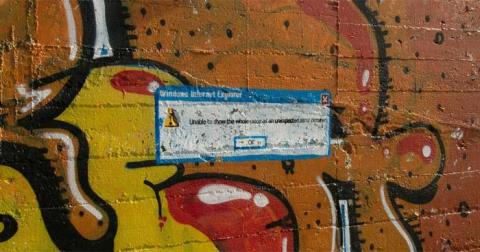How To Limit Download Speed In Google Chrome

Learn how to limit your download speed in Google Chrome to manage bandwidth and improve overall performance during downloads.
Using Guest Mode on Chrome allows users to browse the web without signing in. However, it poses certain security risks. To enhance your browsing security, you can easily disable Guest Mode with a few simple steps. This article will detail how to disable and re-enable Guest Mode on Chrome across different operating systems.

Guest Mode is handy for temporary browsing, but if you want to completely disable it, follow these methods:


REG ADD HKLM\SOFTWARE\Policies\Google\Chrome /v BrowserGuestModeEnabled /t REG_DWORD /d 0

Upon relaunching Chrome, the Guest Mode option will be removed.

HKEY_LOCAL_MACHINE\SOFTWARE\Policies\Google\Chrome.
If you are using a Mac, follow these steps:

defaults write com.google.Chrome BrowserGuestModeEnabled -bool falseAfter restarting, the Guest Mode will no longer be available.
defaults write com.google.Chrome BrowserGuestModeEnabled -bool trueGuest Mode prevents users from saving browsing data, while Incognito Mode allows users to browse privately within their logged-in Google account. Both modes delete session data upon closing. Guest Mode is best used for public browsing without linking personal data, while Incognito is effective for private activities.
Now that you know how to enable and disable Guest Mode on Google Chrome on both Windows and Mac, what are your thoughts? Have you disabled Guest Mode previously? Share your experiences in the comments!
Learn how to limit your download speed in Google Chrome to manage bandwidth and improve overall performance during downloads.
Learn how to seamlessly install Google Chrome on your Amazon Fire Tablet with our updated guide, ensuring access to favorite apps and functionalities.
How to change the cursor in Google Chrome, Changing the cursor in Google Chrome is very simple. Below is a step-by-step guide on how to change the cursor in Google
Chrome is currently the most popular web browser because of the stability and the utilities it brings. However, during use, there are errors with this browser that make users feel confused.
Did you accidentally close a tab or you simply didn't remember the interesting web page you saw in your iPhone or iPad browser? Then apply the following instructions to restore recently closed tabs!
Err_Connection_refused on Chrome is an error that occurs quite often on this browser. It makes it impossible for users to access any website.
IDM is the best download support tool available today, knowing this software will help us to use it better.
Many times in the process of using the IDM download tool, we often encounter IDM not to force links to download some videos and clips on YouTube. Just a little change is the situation will improve immediately.
While surfing the web on your computer, you may encounter content that you cannot copy. So how can I copy this content? Let's find out!
All of us are familiar with Chrome! This is a light and fast browser, a software that is almost a must for the digital information age, everything is about the web today.
Unnecessary data accumulated in the system after a long time of use makes your computer work more slowly. You can delete them manually, but why not automate the process when possible?
Setting up and changing new tab pages on Google Chrome will help you work more efficiently. Here's how to customize the new tab page on Google Chrome.
Turning off the spell check feature on Internet browsers will help users to manipulate better and more convenient on these browsers when working.
Obviously, deleting web browser history on computers is very easy and quick to do, but not everyone knows on Android devices. So what to do?
Discover how to find out which celebrities you resemble using the new Familiar Faces feature in B612.
Learn how to disable the background mode of BlueStacks to enhance your computer’s performance while saving resources.
Learn how to effectively remove old boot menu options on Windows 10. Keep your boot menu clean and optimized for efficiency with these easy steps.
Discover the essential CROSH commands for your Chromebook. Get troubleshooting tips and system configurations to enhance your Chrome OS experience. Learn more!
Zoom is a top video conferencing service for connecting with friends, family, business associates, and classmates on various devices including Amazon Fire tablets.
Discover the advantages of the AccuType Keyboard in Lenovo laptops. Learn why this keyboard enhances productivity and provides a superior typing experience.
Learn how to utilize the SkyShare feature on Skyworth Smart TV for easy connection with your phone or tablet, enhancing your viewing experience.
Learn how to limit your download speed in Google Chrome to manage bandwidth and improve overall performance during downloads.
Discover how to fix the error of not being able to install software on Windows 10/11. Learn essential steps and troubleshooting techniques.
Learn how to create an Instagram account without a phone number. This step-by-step guide will help you sign up using an email address instead, making it quick and easy.
Step-by-step guide to change the location of the data sharing folder between the NoxPlayer Android emulator and your computer for enhanced file management.
Learn how to efficiently delete data (photos, videos, music, etc.) on the Android NoxPlayer emulator.
Learn how to remove fonts easily with PicsArt, one of the leading photo editing applications that enhances your photography experience.
Discover the 11 best Virtual Router Software for Windows that allows you to convert your PC into a virtual Wi-Fi router, enhancing your internet sharing capabilities.
Learn the comprehensive steps to reset your Smart TV Skyworth effectively with WebTech360. Optimize performance and settings!


























Duy Sinh 6789 -
LOL, I disabled guest mode like a pro now! Who knew it could be this easy? Appreciate the help
Huyền Lizzie -
Anyone else ever accidentally opened guest mode? It’s a nightmare trying to get back to my settings!
Sara Thompson -
I hope they make it easier to find these settings in future updates. Thanks for the detailed guide!